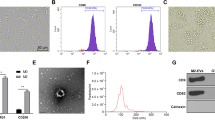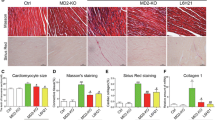Abstract
Acute myocardial infarction (AMI) causes sterile inflammation, which exacerbates tissue injury. Elevated levels of circulating mitochondrial DNA (mtDNA) have been associated with AMI. We hypothesized that mtDNA triggers an innate immune response via TLR9 and NF-κB activation, causing cardiomyocyte injury. Murine cardiomyocytes express TLR9 mRNA and protein and were able to internalize fluorescently labeled mouse mtDNA. Incubation of human embryonic kidney cells with serum from AMI patients containing naturally elevated levels of mtDNA induced TLR9-dependent NF-κB activity. This effect was mimicked by isolated mtDNA. mtDNA activated NF-κB in reporter mice both in vivo and in isolated cardiomyocytes. Moreover, incubation of isolated cardiomyocytes with mtDNA induced cell death after 4 and 24 h. Laser confocal microscopy showed that incubation of cardiomyocytes with mtDNA accelerated mitochondrial depolarization induced by reactive oxygen species. In contrast to mtDNA, isolated total DNA did not activate NF-κB nor induce cell death. In conclusion, mtDNA can induce TLR9-dependent NF-κB activation in reporter cells and activate NF-κB in cardiomyocytes. In cardiomyocytes, mtDNA causes mitochondrial dysfunction and death. Endogenous mtDNA in the extracellular space is a danger signal with direct detrimental effects on cardiomyocytes.







Similar content being viewed by others
References
Bliksoen M, Mariero LH, Ohm IK, Haugen F, Yndestad A, Solheim S, Seljeflot I, Ranheim T, Andersen GO, Aukrust P, Valen G, Vinge LE (2012) Increased circulating mitochondrial DNA after myocardial infarction. Int J Cardiol 158:132–134. doi:10.1016/j.ijcard.2012.04.047
Boehm O, Markowski P, van der Giet M, Gielen V, Kokalova A, Brill C, Hoeft A, Baumgarten G, Meyer R, Knuefermann P (2013) In vivo TLR9 inhibition attenuates CpG-induced myocardial dysfunction. Mediators Inflamm 2013:217297. doi:10.1155/2013/217297
Boyd JH, Mathur S, Wang Y, Bateman RM, Walley KR (2006) Toll-like receptor stimulation in cardiomyoctes decreases contractility and initiates an NF-kappaB dependent inflammatory response. Cardiovasc Res 72:384–393. doi:10.1016/j.cardiores.2006.09.011
Bulicheva N, Fidelina O, Mkrtumova N, Neverova M, Bogush A, Bogush M, Roginko O, Veiko N (2008) Effect of cell-free DNA of patients with cardiomyopathy and rDNA on the frequency of contraction of electrically paced neonatal rat ventricular myocytes in culture. Ann N Y Acad Sci 1137:273–277. doi:10.1196/annals.1448.023
Carlsen H, Moskaug JO, Fromm SH, Blomhoff R (2002) In vivo imaging of NF-kappa B activity. J Immunol 168:1441–1446. doi:10.4049/jimmunol.168.3.1441
Chuang TH, Ulevitch RJ (2000) Cloning and characterization of a sub-family of human toll-like receptors: hTLR7, hTLR8 and hTLR9. Eur Cytokine Netw 11:372–378
Collins LV, Hajizadeh S, Holme E, Jonsson IM, Tarkowski A (2004) Endogenously oxidized mitochondrial DNA induces in vivo and in vitro inflammatory responses. J Leukoc Biol 75:995–1000. doi:10.1189/jlb.0703328
Doevendans PA, Daemen MJ, de Muinck ED, Smits JF (1998) Cardiovascular phenotyping in mice. Cardiovasc Res 39:34–49. doi:10.1016/S0008-6363(98)00073-X
Dohlen G, Carlsen H, Blomhoff R, Thaulow E, Saugstad OD (2005) Reoxygenation of hypoxic mice with 100 % oxygen induces brain nuclear factor-kappa B. Pediatr Res 58:941–945. doi:10.1203/01.pdr.0000182595.62545.ee
Ewald SE, Lee BL, Lau L, Wickliffe KE, Shi GP, Chapman HA, Barton GM (2008) The ectodomain of Toll-like receptor 9 is cleaved to generate a functional receptor. Nature 456:658–662. doi:10.1038/nature07405
Frangogiannis NG (2014) The inflammatory response in myocardial injury, repair, and remodelling. Nat Rev Cardiol 11:255–265. doi:10.1038/nrcardio.2014.28
Gustafsson AB, Gottlieb RA (2008) Heart mitochondria: gates of life and death. Cardiovasc Res 77:334–343. doi:10.1093/cvr/cvm005
Hajizadeh S, DeGroot J, TeKoppele JM, Tarkowski A, Collins LV (2003) Extracellular mitochondrial DNA and oxidatively damaged DNA in synovial fluid of patients with rheumatoid arthritis. Arthritis Res Ther 5:R234–R240. doi:10.1186/ar787
Heusch G (2015) Molecular basis of cardioprotection: signal transduction in ischemic pre-, post-, and remote conditioning. Circ Res 116:674–699. doi:10.1161/circresaha.116.305348
Heusch G, Libby P, Gersh B, Yellon D, Bohm M, Lopaschuk G, Opie L (2014) Cardiovascular remodelling in coronary artery disease and heart failure. Lancet 383:1933–1943. doi:10.1016/s0140-6736(14)60107-0
Johansen D, Sanden E, Hagve M, Chu X, Sundset R, Ytrehus K (2011) Heptanol triggers cardioprotection via mitochondrial mechanisms and mitochondrial potassium channel opening in rat hearts. Acta Physiol (Oxf) 201:435–444. doi:10.1111/j.1748-1716.2010.02221.x
Kariko K, Weissman D, Welsh FA (2004) Inhibition of toll-like receptor and cytokine signaling–a unifying theme in ischemic tolerance. J Cereb Blood Flow Metab 24:1288–1304. doi:10.1097/01.wcb.0000145666.68576.71
Kelly RD, Mahmud A, McKenzie M, Trounce IA, St John JC (2012) Mitochondrial DNA copy number is regulated in a tissue specific manner by DNA methylation of the nuclear-encoded DNA polymerase gamma A. Nucleic Acids Res 40:10124–10138. doi:10.1093/nar/gks770
Knuefermann P, Schwederski M, Velten M, Krings P, Ehrentraut H, Rudiger M, Boehm O, Fink K, Dreiner U, Grohe C, Hoeft A, Baumgarten G, Koch A, Zacharowski K, Meyer R (2008) Bacterial DNA induces myocardial inflammation and reduces cardiomyocyte contractility: role of toll-like receptor 9. Cardiovasc Res 78:26–35. doi:10.1093/cvr/cvn011
Latz E, Verma A, Visintin A, Gong M, Sirois CM, Klein DC, Monks BG, McKnight CJ, Lamphier MS, Duprex WP, Espevik T, Golenbock DT (2007) Ligand-induced conformational changes allosterically activate Toll-like receptor 9. Nat Immunol 8:772–779. doi:10.1038/ni1479
Lei P, Baysa A, Nebb HI, Valen G, Skomedal T, Osnes JB, Yang Z, Haugen F (2013) Activation of Liver X receptors in the heart leads to accumulation of intracellular lipids and attenuation of ischemia-reperfusion injury. Basic Res Cardiol 108:323. doi:10.1007/s00395-012-0323-z
Leifer CA, Rose WA 2nd, Botelho F (2013) Traditional biochemical assays for studying toll-like receptor 9. J Immunoassay Immunochem 34:1–15. doi:10.1080/15321819.2012.666222
Lin L, Knowlton AA (2014) Innate immunity and cardiomyocytes in ischemic heart disease. Life Sci 100:1–8. doi:10.1016/j.lfs.2014.01.062
Lohner R, Schwederski M, Narath C, Klein J, Duerr GD, Torno A, Knuefermann P, Hoeft A, Baumgarten G, Meyer R, Boehm O (2013) Toll-like receptor 9 promotes cardiac inflammation and heart failure during polymicrobial sepsis. Mediators Inflamm 2013:261049. doi:10.1155/2013/261049
Mathur S, Walley KR, Boyd JH (2011) The Toll-like receptor 9 ligand CPG-C attenuates acute inflammatory cardiac dysfunction. Shock 36:478–483. doi:10.1097/SHK.0b013e31822d6442
Matzinger P (2007) Friendly and dangerous signals: is the tissue in control? Nat Immunol 8:11–13. doi:10.1038/ni0107-11
McDonald B, Pittman K, Menezes GB, Hirota SA, Slaba I, Waterhouse CC, Beck PL, Muruve DA, Kubes P (2010) Intravascular danger signals guide neutrophils to sites of sterile inflammation. Science 330:362–366. doi:10.1126/science.1195491
McKelvey KJ, Highton J, Hessian PA (2011) Cell-specific expression of TLR9 isoforms in inflammation. J Autoimmun 36:76–86. doi:10.1016/j.jaut.2010.11.001
Nishimura M, Naito S (2005) Tissue-specific mRNA expression profiles of human toll-like receptors and related genes. Biol Pharm Bull 28:886–892. doi:10.1248/bpb.28.886
Oka T, Hikoso S, Yamaguchi O, Taneike M, Takeda T, Tamai T, Oyabu J, Murakawa T, Nakayama H, Nishida K, Akira S, Yamamoto A, Komuro I, Otsu K (2012) Mitochondrial DNA that escapes from autophagy causes inflammation and heart failure. Nature 485:251–255. doi:10.1038/nature10992
Pollack Y, Kasir J, Shemer R, Metzger S, Szyf M (1984) Methylation pattern of mouse mitochondrial DNA. Nucleic Acids Res 12:4811–4824. doi:10.1093/nar/12.12.4811
Riad A, Westermann D, Escher F, Becher PM, Savvatis K, Lettau O, Heimesaat MM, Bereswill S, Volk HD, Schultheiss HP, Tschope C (2010) Myeloid differentiation factor-88 contributes to TLR9-mediated modulation of acute coxsackievirus B3-induced myocarditis in vivo. Am J Physiol Heart Circ Physiol 298:H2024–H2031. doi:10.1152/ajpheart.01188.2009
Ries M, Schuster P, Thomann S, Donhauser N, Vollmer J, Schmidt B (2013) Identification of novel oligonucleotides from mitochondrial DNA that spontaneously induce plasmacytoid dendritic cell activation. J Leukoc Biol 94:123–135. doi:10.1189/jlb.0612278
Schneider CA, Rasband WS, Eliceiri KW (2012) NIH Image to ImageJ: 25 years of image analysis. Nat Methods 9:671–675. doi:10.1038/nmeth.2089
Shintani Y, Kapoor A, Kaneko M, Smolenski RT, D’Acquisto F, Coppen SR, Harada-Shoji N, Lee HJ, Thiemermann C, Takashima S, Yashiro K, Suzuki K (2013) TLR9 mediates cellular protection by modulating energy metabolism in cardiomyocytes and neurons. Proc Natl Acad Sci USA 110:5109–5114. doi:10.1073/pnas.1219243110
Solheim S, Grogaard HK, Hoffmann P, Arnesen H, Seljeflot I (2008) Inflammatory responses after percutaneous coronary intervention in patients with acute myocardial infarction or stable angina pectoris. Scand J Clin Lab Inv 68:555–562. doi:10.1080/00365510701884584
Takeuchi O, Akira S (2010) Pattern recognition receptors and inflammation. Cell 140:805–820. doi:10.1016/j.cell.2010.01.022
Valen G (2011) Innate immunity and remodelling. Heart Fail Rev 16:71–78. doi:10.1007/s10741-010-9187-1
Valen G, Yan ZQ, Hansson GK (2001) Nuclear factor kappa-B and the heart. J Am Coll Cardiol 38:307–314. doi:10.1016/S0735-1097(01)01377-8
Valeur HS, Valen G (2009) Innate immunity and myocardial adaptation to ischemia. Basic Res Cardiol 104:22–32. doi:10.1007/s00395-008-0756-6
Velten M, Duerr GD, Pessies T, Schild J, Lohner R, Mersmann J, Dewald O, Zacharowski K, Klaschik S, Hilbert T, Hoeft A, Baumgarten G, Meyer R, Boehm O, Knuefermann P (2012) Priming with synthetic oligonucleotides attenuates pressure overload-induced inflammation and cardiac hypertrophy in mice. Cardiovasc Res 96:422–432. doi:10.1093/cvr/cvs280
Wang L, Jiang W, Ding G, Cao H, Lu Y, Luo P, Zhou H, Zheng J (2007) The newly identified CpG-N ODN208 protects mice from challenge with CpG-S ODN by decreasing TNF-alpha release. Int Immunopharmacol 7:646–655. doi:10.1016/j.intimp.2007.01.005
Yang XM, Cui L, White J, Kuck J, Ruchko MV, Wilson GL, Alexeyev M, Gillespie MN, Downey JM, Cohen MV (2015) Mitochondrially targeted Endonuclease III has a powerful anti-infarct effect in an in vivo rat model of myocardial ischemia/reperfusion. Basic Res Cardiol 110:3. doi:10.1007/s00395-014-0459-0
Yellon DM, Hausenloy DJ (2007) Myocardial reperfusion injury. N Engl J Med 357:1121–1135. doi:10.1056/NEJMra071667
Zhang Q, Itagaki K, Hauser CJ (2010) Mitochondrial DNA is released by shock and activates neutrophils via p38 map kinase. Shock 34:55–59. doi:10.1097/SHK.0b013e3181cd8c08
Zhang Q, Raoof M, Chen Y, Sumi Y, Sursal T, Junger W, Brohi K, Itagaki K, Hauser CJ (2010) Circulating mitochondrial DAMPs cause inflammatory responses to injury. Nature 464:104–107. doi:10.1038/nature08780
Zorov DB, Juhaszova M, Sollott SJ (2006) Mitochondrial ROS-induced ROS release: an update and review. Biochim Biophys Acta 1757:509–517. doi:10.1016/j.bbabio.2006.04.029
Acknowledgments
Harald Carlsen and Jan Øivind Moskaug, Department of Nutrition, Institute of Basic Medical Sciences, University of Oslo, kindly provided NF-κB luciferase reporter mice. The authors acknowledge the expertise of Gerbrand Koster for technical advice (NorMIC imaging cluster, Department of Biosciences, University of Oslo) and technical assistance was expertly performed by Torun Flatebø and Sowmya Sanjeevini.
Funding
This work was supported by the Norwegian Health Association, UNIFOR, the Norwegian Research Council, the University of Oslo, and the Novo Nordisk Foundation. Marte Bliksøen was supported by a grant from South-Eastern Regional Health Trust.
Author information
Authors and Affiliations
Corresponding author
Ethics declarations
Conflict of interest
None.
Additional information
Professor Guro Valen passed away 26 September 2014.
G. Valen and K.-O. Stensløkken have shared last authorship.
Electronic supplementary material
Below is the link to the electronic supplementary material.
395_2016_553_MOESM1_ESM.tif
Supplementary material 1 (TIFF 1029 kb) Figure S1 legend: 1 % agarose gel with SYBR Safe DNA gel stain (Invitrogen) showing DNA isolated from murine liver or from mitochondrial extracts from murine liver, eluted in buffer and subjected to sonication for 2 × 30 s or sham treatment with the same sample handling but without sonication. Arrow: heavy DNA band present in unsonicated mitochondrial DNA sample (mtDNA), which is absent from the sonicated samples (mtDNAs), indicating DNA fragmentation. There is evidence of some DNA degradation in the non-sonicated samples, but the mtDNAs sample shows denser smearing in the ~ 300 bp region. mtDNA (mitochondrial DNA), mtDNAs (sonicated mtDNA), tDNA (total DNA), tDNAs (sonicated total DNA) and 1 kb ladder
395_2016_553_MOESM2_ESM.tif
Supplementary material 2 (TIFF 505 kb) Figure S2 legend: Figure shows remaining primary mouse cardiomyocytes after different DNA agonist treatment for 4 and 24 h. There is a decrease in the number of viable cells after 24 h in control, but the number of cells lost is significantly higher in the cardiomyocytes treated either with mtDNA (B) or CpGC (D). Statistical differences was tested with Wilcoxon matched-pairs signed rank test (* p < 0.05)
395_2016_553_MOESM3_ESM.avi
Supplementary material 3 (AVI 43012 kb) Video S3 The video shows a confocal Z-stack with mouse cardiomyocytes exposed to Cy-5 tagged mtDNA. The mtDNA is present in the peri-nuclear area, but also in the cytosol
Rights and permissions
About this article
Cite this article
Bliksøen, M., Mariero, L.H., Torp, M.K. et al. Extracellular mtDNA activates NF-κB via toll-like receptor 9 and induces cell death in cardiomyocytes. Basic Res Cardiol 111, 42 (2016). https://doi.org/10.1007/s00395-016-0553-6
Received:
Accepted:
Published:
DOI: https://doi.org/10.1007/s00395-016-0553-6




